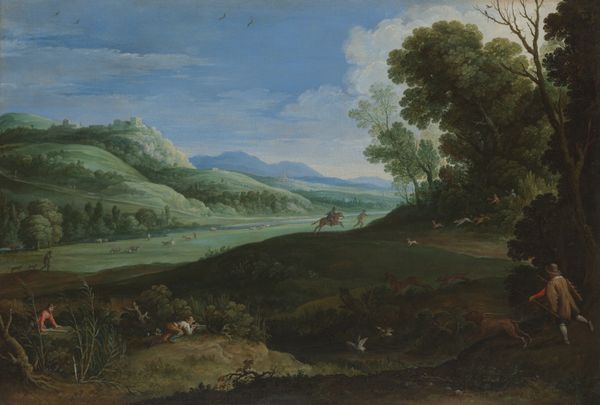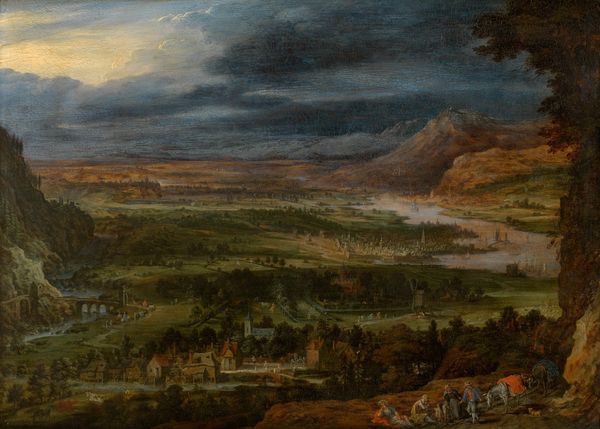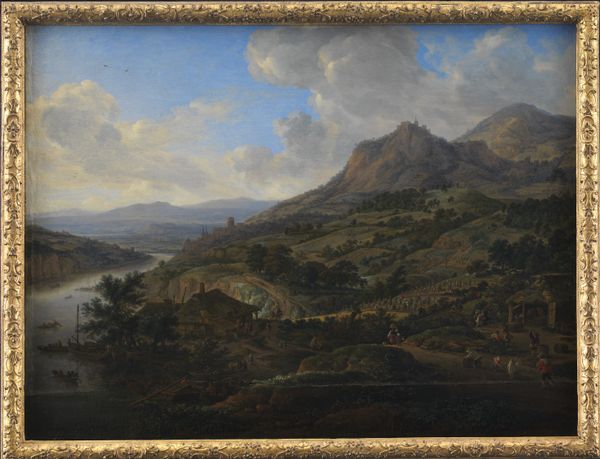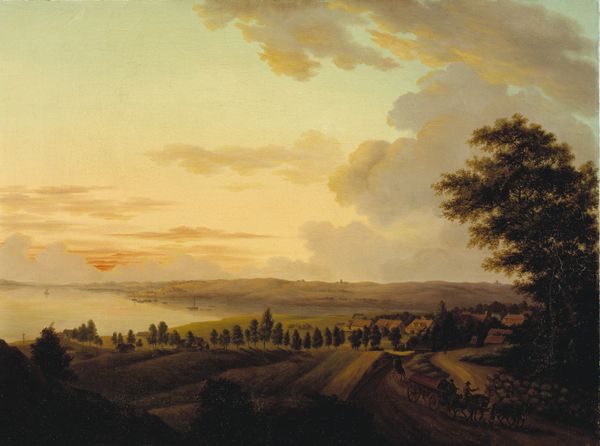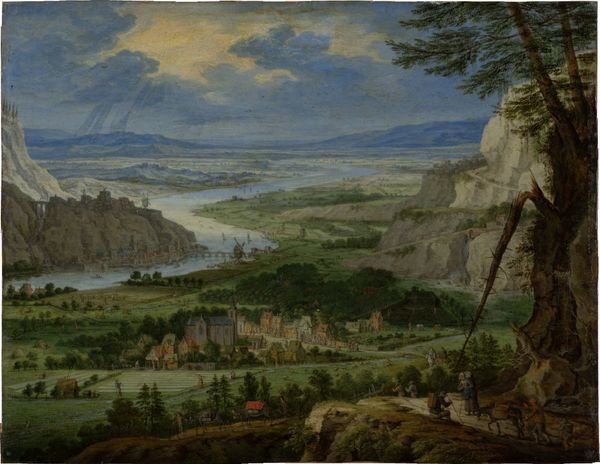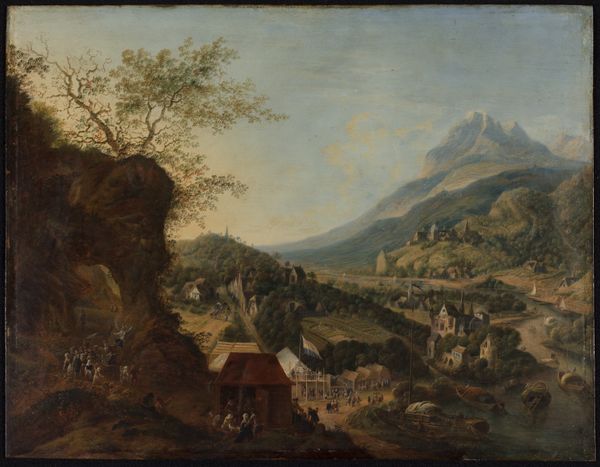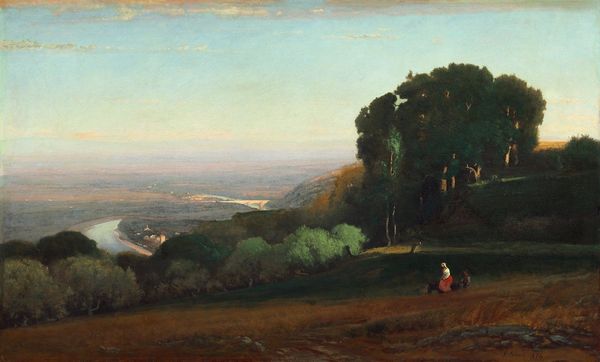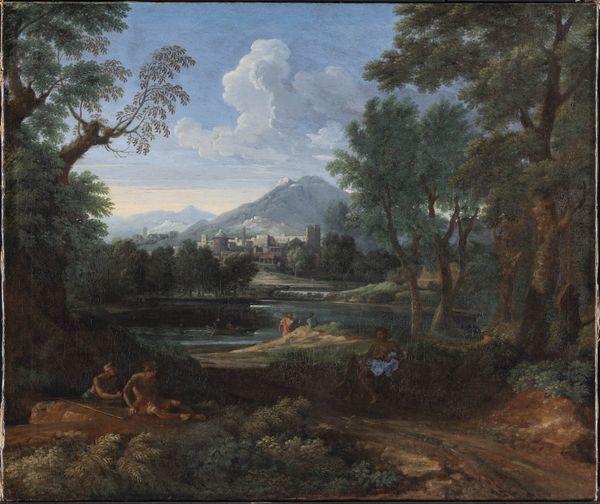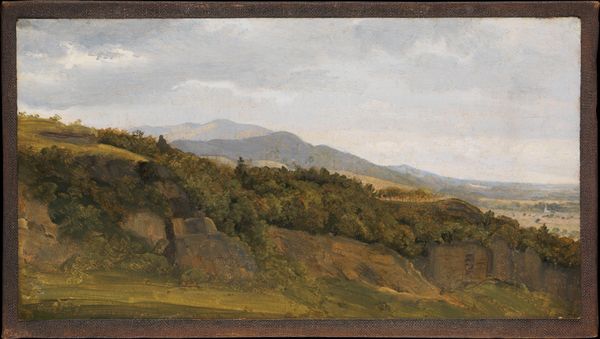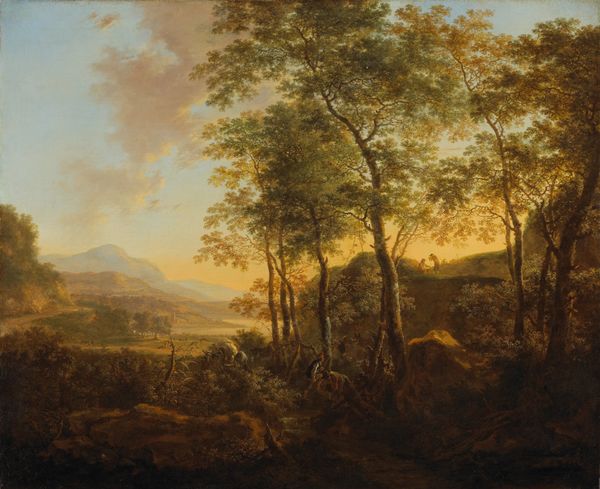
painting, oil-paint
#
baroque
#
painting
#
oil-paint
#
landscape
#
oil painting
#
13_16th-century
#
cityscape
#
genre-painting
#
building
Dimensions: 23.3 x 36.0 x min. 0.8 cm
Copyright: Public Domain
Editor: We're looking at Lucas van Valckenborch's "View of Linz with Artist Drawing in the Foreground," painted in 1593 using oil paint. The landscape is beautifully rendered, but there's almost a detached, observational feel. What do you see in this piece beyond the picturesque scenery? Curator: This isn't simply a depiction of Linz; it’s a constructed narrative. Valckenborch is engaging with the emerging humanist values of the late 16th century. How does the inclusion of the artist, drawing in the foreground, shift your understanding of the painting's message? Editor: I see what you mean! It adds a layer of self-awareness. Is he commenting on the artist's role in documenting and interpreting the world? Curator: Precisely! Think about the social and political context. Cities were centers of burgeoning trade and intellectual exchange, but also sites of power, inequality, and religious tension. Consider who is being given a voice in the foreground versus the almost anonymous figures in the distant city. Who is empowered to represent whom? Editor: So the artist isn't just showing us Linz, he's also hinting at who gets to define its image and its story. The power dynamics are really interesting! Curator: Exactly. Valckenborch's "View of Linz" becomes more than just a landscape; it's a commentary on representation and the artist's own position within that complex social fabric. Editor: I hadn't considered that perspective. Thanks, that really broadened my understanding. Curator: My pleasure. Art gives us ways to reflect critically on not just the visible, but who gets to do the seeing and showing.
Comments
stadelmuseum about 2 years ago
⋮
Archduke Ernest of Austria was prepared to pay 30 thalers for this little panel painting and presumably took it with him to the Habsburg Netherlands. Lucas van Valckenborch had been in the service of Ernest's brother, Matthias, who later became emperor. However, the work must have been painted in Frankfurt, where the artist had settled in 1593. When executing the painting, he was able to refer to drawings in his possession which he had made during his time at the court in Linz. The viewer gazes down into the Danube Valley from the Pöstlingberg together with the artist, who personally guarantees the accuracy. The parish church of Linz, the main square with the town hall and Castle Hill are all easily recognisable.
Join the conversation
Join millions of artists and users on Artera today and experience the ultimate creative platform.
